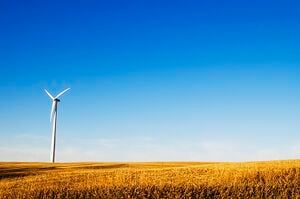
- Red state, red power: Nebraska's publicly-owned electricity system, January 28, 2015...[1]
Events[edit | edit source]
Biodiversity[edit | edit source]
Saline Wetlands Conservation Partnership (SWCP) is a conservation program devoted to the protection and preservation of Nebraska’s Eastern Saline Wetlands. Limited to the floodplain swales and depressions within the Salt Creek, Little Salt Creek, and Rock Creek drainages, it is estimated that the Eastern Saline Wetlands once covered an area in excess of 200,000 acres (810 km2). Recently, due to extensive degradation, draining and filling through commercial, residential, and agricultural development, less than 4,000 acres (16 km2) remain, and many of these remnants are highly degraded. It is becoming increasingly important to preserve this unique wetland resource. Although several existing programs have been recognized to address saline wetland conservation needs, they alone have not been enough to ensure the long term protection of this endangered resource. The Saline Wetland Conservation Partnership (SWCP) was created to offer additional protection and management of the state’s diminishing saline wetlands.
Community energy[edit | edit source]
Solar power in Nebraska is used for only a very small percentage of the state's electricity, although it is rapidly becoming competitive with grid electricity, due to the decrease in cost and the 30% tax credit, which can be used to install systems of any size. In 2024, the state ranked 44th among the 50 U.S. states with 203 MW of installed capacity.
Solar power and wind power could be harvested to provide all of Nebraska's energy need, although they would require either transmission lines to provide power when neither is available or storage. Estimates show that Nebraska could generate 3,832,600 GWh/year from wind, and 34.1% of demand from rooftop solar panels, using 8,200 MW of solar panels.
Wind power in Nebraska remains largely untapped in comparison with its potential. In the Great Plains, with more than 47,000 farms and open skies it ranks near the top in the United States in its ability to generate energy from wind. As of 2015, the state had not adopted a renewable portfolio standard. Omaha Public Power District (OPPD) is one of the state's largest purchasers of wind energy.
In 2016, Nebraska had 1,335 MW of installed wind power generation capacity, producing 10.1% of the electricity generated in-state. This increased to a capacity of 2,142 MW and a 19.92% of generation in 2019.
Cycling activism[edit | edit source]
Wikipedia: Bike paths in Nebraska (category)
Sustainable transport activism[edit | edit source]
Wikipedia: Hiking trails in Nebraska (category)
Resources[edit | edit source]
- Nebraska Environmental Trust: The Nebraska Legislature created the Nebraska Environmental Trust in 1992. Using revenue from the Nebraska Lottery, the Trust has provided over $221 million in grants to more than 1,600 projects across the state. Anyone – citizens, organizations, communities, farmers and businesses – can apply for funding to protect habitat, improve water quality and establish recycling programs in Nebraska. The Nebraska Environmental Trust works to preserve, protect and restore our natural resources for future generations.[2]
Citizens data initiative[edit | edit source]
About Nebraska[edit | edit source]
Nebraska ( nə-BRASS-kə) is a landlocked state in the Midwestern region of the United States. It borders South Dakota to the north; Iowa to the east and Missouri to the southeast, both across the Missouri River; Kansas to the south; Colorado to the southwest; and Wyoming to the west. Nebraska is the 16th-largest state by land area, with just over 77,220 square miles (200,000 km2). With a population of over 1.9 million, it is the 38th-most populous state and the eighth-least densely populated. Its capital is Lincoln, and its most populous city is Omaha, which is on the Missouri River. Nebraska was admitted into the United States in 1867, two years after the end of the American Civil War. The Nebraska Legislature is unlike any other American legislature in that it is unicameral, and its members are elected without any official reference to political party affiliation. Nebraska is one of only two states that divide electoral college votes by district, and is not winner-take-all.
Nebraska is composed of two major land regions: the Dissected Till Plains and the Great Plains. The Dissected Till Plains region consists of gently rolling hills and contains the state's largest cities, Omaha and Lincoln. The Great Plains region, occupying most of western Nebraska, is characterized by treeless prairie. Eastern Nebraska has a humid continental climate while western Nebraska is primarily semi-arid. The state has wide variations between winter and summer temperatures; the variations decrease in southern Nebraska. Violent thunderstorms and tornadoes occur primarily during spring and summer, and sometimes in autumn. The Chinook wind tends to warm the state significantly in the winter and early spring.
Indigenous peoples, including Omaha, Missouria, Ponca, Pawnee, Otoe, and various branches of the Lakota (Sioux) tribes, lived in the region for thousands of years before European discovery and exploration. The state is crossed by many historic trails, including that of the Lewis and Clark Expedition. The completion of the Transcontinental Railroad through Nebraska and passage of the Homestead Acts led to rapid growth in the population of American settlers in the 1870s and 1880s and the development of a large agriculture sector for which the state is known to this day.
References
- ↑ openDemocracy
- ↑ Nebraska Environmental Trust press release, September 8, 2014